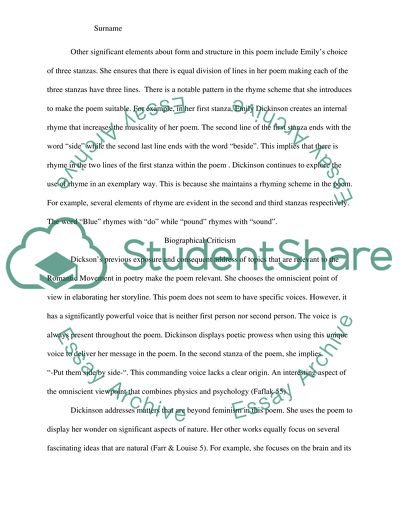Cite this document
(“Textual Analysis of Emily Dickinsons Poem The Brain is wider than the Research Paper”, n.d.)
Retrieved from https://studentshare.org/english/1460203-textual-analysis-of-emily-dickinsons-poem-the-brain-is-wider-than-the-sky
Retrieved from https://studentshare.org/english/1460203-textual-analysis-of-emily-dickinsons-poem-the-brain-is-wider-than-the-sky
(Textual Analysis of Emily Dickinsons Poem The Brain Is Wider Than the Research Paper)
https://studentshare.org/english/1460203-textual-analysis-of-emily-dickinsons-poem-the-brain-is-wider-than-the-sky.
https://studentshare.org/english/1460203-textual-analysis-of-emily-dickinsons-poem-the-brain-is-wider-than-the-sky.
“Textual Analysis of Emily Dickinsons Poem The Brain Is Wider Than the Research Paper”, n.d. https://studentshare.org/english/1460203-textual-analysis-of-emily-dickinsons-poem-the-brain-is-wider-than-the-sky.


